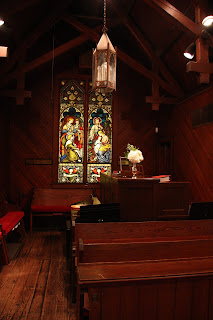Finally, a long over due post about a noteworthy day during my visit to Georgia last May.
Georgia is an endlessly interesting state with a very long history. The last of the original thirteen colonies of the New World it has many sites of colonial history to visit. I hope to post about some of those stops in the future.
Georgia is on the eastern U. S. seaboard and has a coastline that includes sandy beaches but also marshy, brackish waterways and many islands.
These areas of marsh are called "Golden Marshes" for the beautiful color of the grasses.
Alyssa and I visited a number of coastal islands and this was the type of scenery as we crossed long bridges from island to island.
When I was a teenager I read a number of books that were set in this area of the world. I remember a strong desire to visit this place that was so different from the woods and cold winters of where I had always lived. This place in the books, Georgia, was stiflingly hot and humid. It grew trees draped in growths of spooky spanish moss, something my imagination couldn't conjure. I dearly wanted to visit but to my teenage self it felt equivalent to wanting to visit the moon.
Gone With the Wind was one of the books I loved that was set in this place. There was another series of books written by the author Eugenia Price who lived on one of these Georgian islands and wrote fiction that was based on the history of her home - St. Simon's Island. Price was a talented author who vividly described the southern culture and marshy island setting of her stories and gave me a strong desire to visit that place.
Imagine my excitement when one day I was actually driving (a short distance really) with my daughter to spend some time exploring St. Simon's Island!!!
I had somehow forgotten about the details of Price's books until we were actually arriving on the island. My brain brought back the memory of a church that was important in the stories and I began to wonder if that church actually existed. While my daughter and I discussed what to explore on this island and did some internet research I found a tourist marker for Christ Episcopal Church. Was that the church of Price's novels??
My heart began to beat faster as I realized what I was about to find. I had forgotten the story and details of the books I loved so much in the three decades since I had read them. But as we pulled the car up to the church I knew that I was about to walk into the books I had loved so much years ago.
The original Christ Episcopal Church was built in 1820 but was destroyed by Union soldiers during the Civil War. It was later rebuilt by a man named Anson Dodge in 1884. Eugenia Price's novel Beloved Invader tells the story of this church and the life of Anson Dodge.
When I left on my trip to Georgia, I found my old battered paperback copy of Beloved Invader and threw it in my bag, thinking that a trip to Georgia would be a good time to revisit the story. I had not yet started to read it when we visited St. Simon's. But I did bring it along on our tour of the island (and read it completely again soon after).
The church is filled with beautiful stained glass windows. This one, with the church's history, greets visitors as they enter.
This one depicts the Rev. Anson Dodge in memory of his founding of a home for orphaned boys.
The church is so famous that it is open daily for visitors. We were greeted by a current pastor who told us about the long history of the church and described its features. There were a number of other visitors there that day also.
The wood is noteworthy as it is native pine and all original to the rebuilding by Anson Dodge.
The many stained glass windows depict Biblical scenes as well as historical scenes of St. Simon's Island.
It is a humble church but well appointed.
This is the choir area.
The baptismal font.
The humble pews, all original.
These windows depict the history of the ministry of Charles and John Wesley in the area.
Anson Phelps Dodge came from a wealthy family. His father had a mill on the island in the early nineteenth century. This is a marble bust of Anson when he was a boy and is in the back of the church.
How many times in one's life can a person walk through the real historical setting of a book? I have never done it before. Even looking at these pictures again now, I'm moved by the thrill of doing so last spring. The stories in Price's books are those of life- love, learning, loss- but so lovingly and vividly described by the author as to feel one has met the characters. To go where they lived the story was truly special.
There are many places on the internet to read the long history of this old, old church. A good place to start is here, the church's website.
























Oh, Pam. I am glad you found a way to post. This was touching to read. I think I should find Miss Price again, too.
ReplyDeleteMore. Please.
I love this! And so wonderful that you got to go there, even decades after you first wanted to.
ReplyDeleteThis is incredibly interesting, and I'm so glad you got a chance to experience the place! :)
ReplyDeleteThis comment has been removed by the author.
ReplyDelete